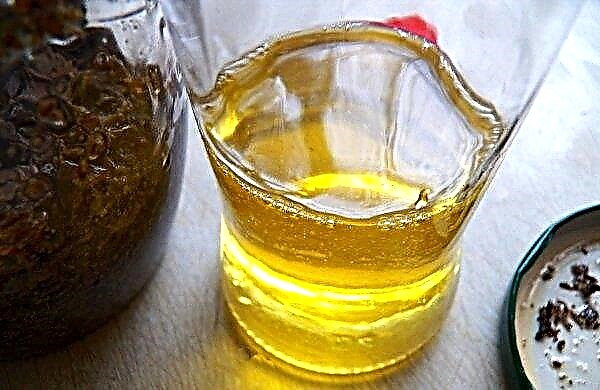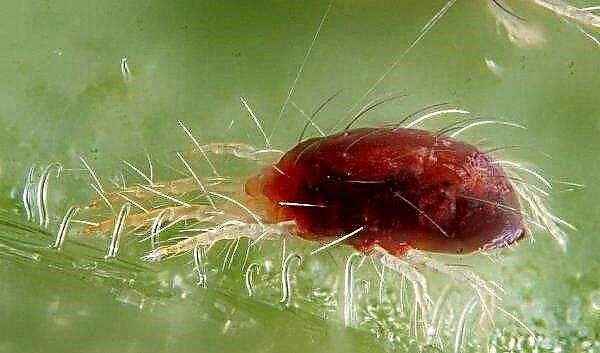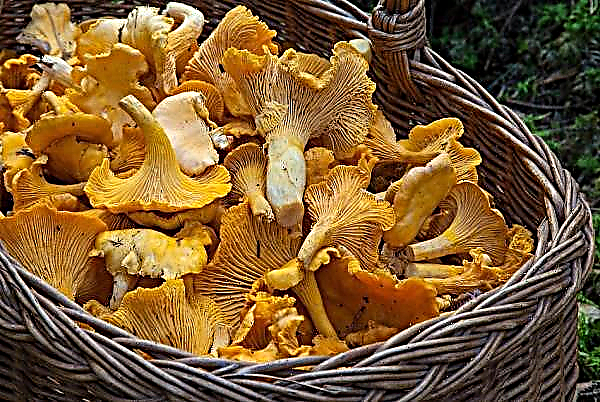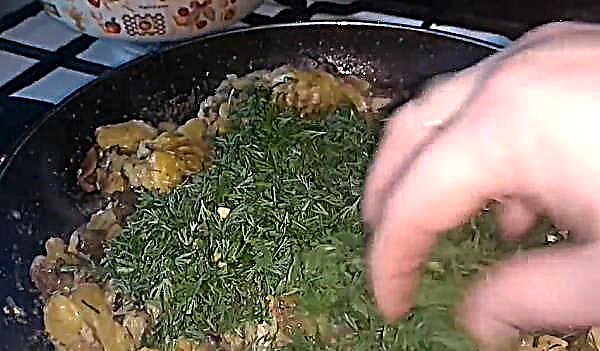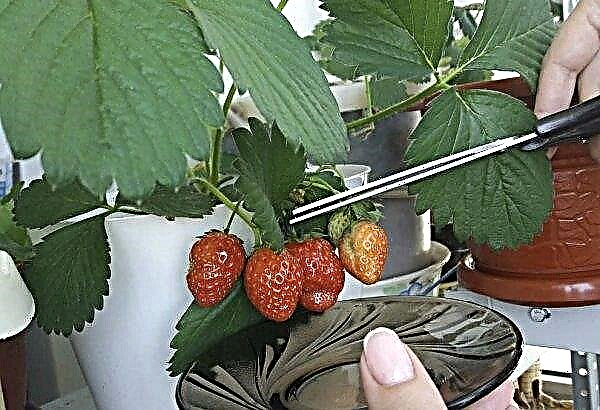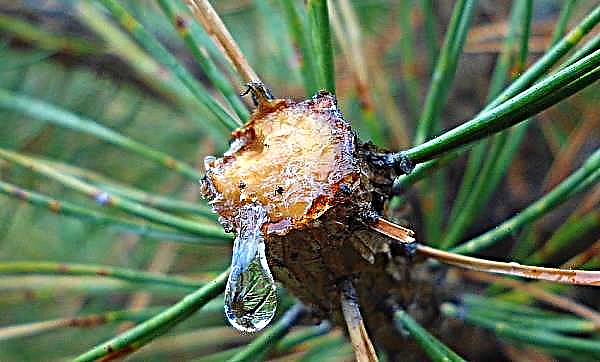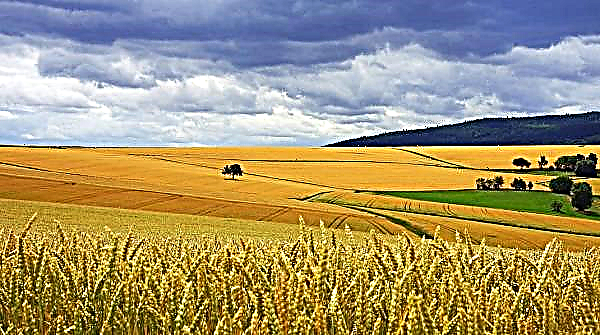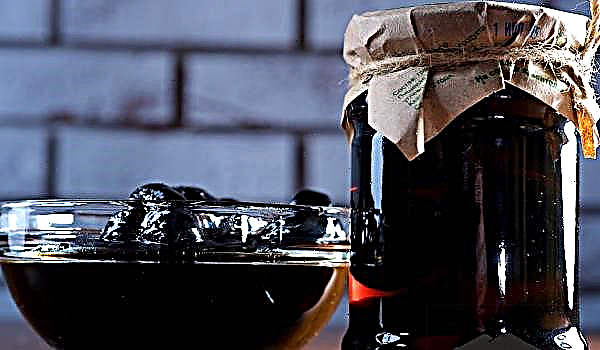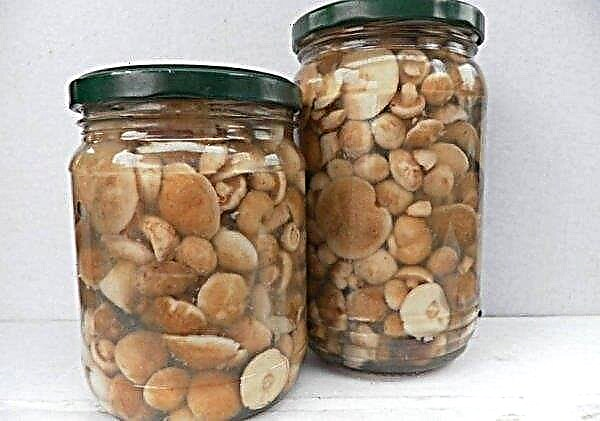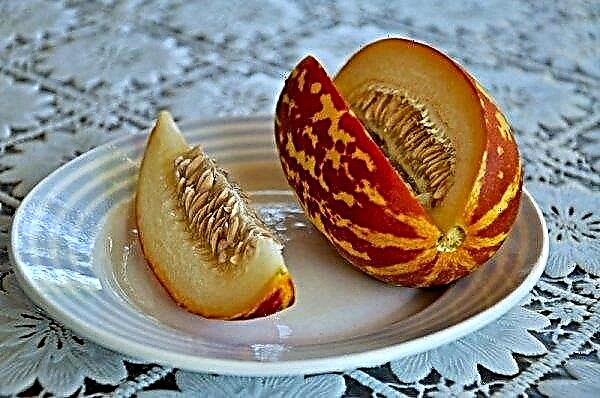Magnolia-peperomy is an unpretentious plant that every grower can grow at home. The following describes the features of caring for the flower and its propagation, as well as possible problems that you may encounter.
Botanical description of the plant
This herbaceous evergreen perennial belongs to the family of peppers and is one of the most popular varieties of peperomia. A small bush grows to 25-30 cm.
Did you know? Translated from Greek, the expressions "peperi" and "omos" mean "pepper" and "similar."
Characteristic signs of magnolia-peperomy are as follows:
- fleshy branched stems with large knots;
- rounded leaves with a diameter of about 5 cm with short petioles;
- the surface of the sheet is glossy;
- the leaves are colored in different shades of green, varieties with spots or pale yellow stripes are found.
Is it possible to keep at home: signs and superstitions
The popular name of the plant is “friendly family”, which means that from the point of view of superstitions, it positively affects the atmosphere in the house.
It is believed that peperomia is magnolian:
- makes people friendly;
- smooths out contradictions and quarrels;
- helps to calm and mitigate explosive temperament;
- relieves flash of anger.

What conditions need to be created for growing a house
This variety is quite unpretentious, and it will be possible to create optimal conditions for it in any apartment.
Choosing the right place
Peperomia needs a bright, but at the same time diffuse lighting without direct sunlight. The window on which the flower will stand should face west or east - then the amount and direction of light will be the best.
Did you know? From the point of view of the Chinese doctrine of Feng Shui, the plant accumulates good thoughts and desires, positively affects the digestive system, helps to make the right decision in a difficult situation.
Varieties with variegated leaves are more demanding on lighting than varieties with green foliage, which can grow in partial shade. You can grow peperomia and under special phytolamps.
Temperature and humidity
The temperature in the room throughout the year should correspond to + 18 ... + 25 ° С. The plant does not tolerate drafts and sharp fluctuations from heat to cool. In the spring, summer and autumn, room humidity will be sufficient, and in winter, when the heaters dry the air, regular spraying of the foliage is recommended. You can also place the pot on a layer of expanded clay, which is kept constantly moist, avoiding contact of the roots with water.
In the spring, summer and autumn, room humidity will be sufficient, and in winter, when the heaters dry the air, regular spraying of the foliage is recommended. You can also place the pot on a layer of expanded clay, which is kept constantly moist, avoiding contact of the roots with water.
How to care at home
Peperomy care does not require special manipulations. The plant does not have a pronounced dormant period, so all conditions of maintenance and care are fulfilled year-round.
Watering
Peperomia can tolerate mild overdrying, as its stems and leaves accumulate enough moisture for possible adverse conditions. Excessive waterlogging can cause a deterioration of the plant, therefore, before watering, you need to make sure that the soil is completely dry.
Important! The combination of high soil moisture and low temperature is the most dangerous because it can cause root decay and flower death.
For irrigation, you need to take the settled water, without impurities of lime or chlorine. It is advisable to slightly warm it, 1-2 degrees more from room temperature.
Fertilizer application
Active growth of a young plant requires more nutrients, so 2 times a month they are fed with a complex mixture for indoor flowers. In this case, the dosage must be reduced by half of that indicated in the instructions. In winter, fertilizers can be reduced or not used.
Pruning
To form a bush of a beautiful shape, use the pinching of the tops on new shoots. Thus, an increase in branching is achieved. Shoots are also shortened in case of foliage falling in the lower part of the bush.
Transfer
Peperomia does not like transplants, so after buying a plant, you should not immediately change his place of residence. For landing use a shallow container, 3-4 cm wider than the previous one, in which it is necessary to provide a significant drainage layer. The soil needs a light and loose, neutral or slightly acidic composition. From ready-made mixtures, soil for ficus or palm is suitable, as well as universal.
Important! You can assess the need for transplantation by examining the drainage hole: if the roots of it are not visible, it is better to leave the plant in place.
For self-preparation of the soil you will need:
- one part of leafy soil and humus;
- one part of peat and sand.

How to propagate
At home, it is easiest to propagate peperomia with apical cuttings, and the plant can also be divided or sown its seeds. Peperomia is propagated in spring or summer, during the period of active growth.
Dividing the bush
When transplanted, the plant can be divided in half to get a new peperomia.
To do this:
- Untangle the roots and carefully divide the bush into two parts.
- To process a slice with crushed charcoal.
- Plant parts of the bush in separate containers.
Cuttings
To root the cuttings, you need to prepare a mixture of turf and sand.
The procedure is as follows:
- Cuttings with 2-3 knots are cut from the tops of the plant.
- Cuttings are planted in the mixture, deepening by 3-4 cm.
- The landing is covered with a film, creating “greenhouse” conditions under it.
 A container with cuttings needs a temperature of about + 24 ° C, cold conditions can lead to decay of shoots.
A container with cuttings needs a temperature of about + 24 ° C, cold conditions can lead to decay of shoots.Seeds
Sowing is carried out in a flat container with a lid, and a mixture of disinfected soil with sand is used as soil.
- Seeds are placed to a depth of about 1 cm and sprinkled with earth.
- Sowing should be moistened, covered and put in heat (+ 25 ° C).
Growing difficulties
The plant may become ill if the basic conditions of maintenance are not observed.
The main problems of peperomy:
- blackening of leaves occurs with a sharp cooling;
- wrinkling of the leaf plate may appear from a sunburn;
- sluggish leaves - a symptom of decay or damage by a fungus;
- dropping leaves indicates dry air and lack of moisture.

Peperomia can be attacked by some pests:
- The spider mite manifests itself as a fibrous whitish coating. After the destruction of adult individuals, the foliage is treated with “Aktofit”, “Sunmight” or “Vermitek”.
- Dry spots on the leaves and a silver hue of the plate indicate the appearance of thrips. To fight use "Aktaru", "Mospilan", "Karate" according to the instructions.
- A mealybug is visible on the bottom of the leaf, where a kind of “flour” and sticky secretions form. After mechanical cleansing, it is necessary to treat the plant with the Rogor, Fosfamid, Aktara and other preparations.
A variety of varieties and colors allows you to choose magnolia-pepermia to your liking, and caring for it will not be difficult. A compact and healthy indoor plant is suitable for every home.

